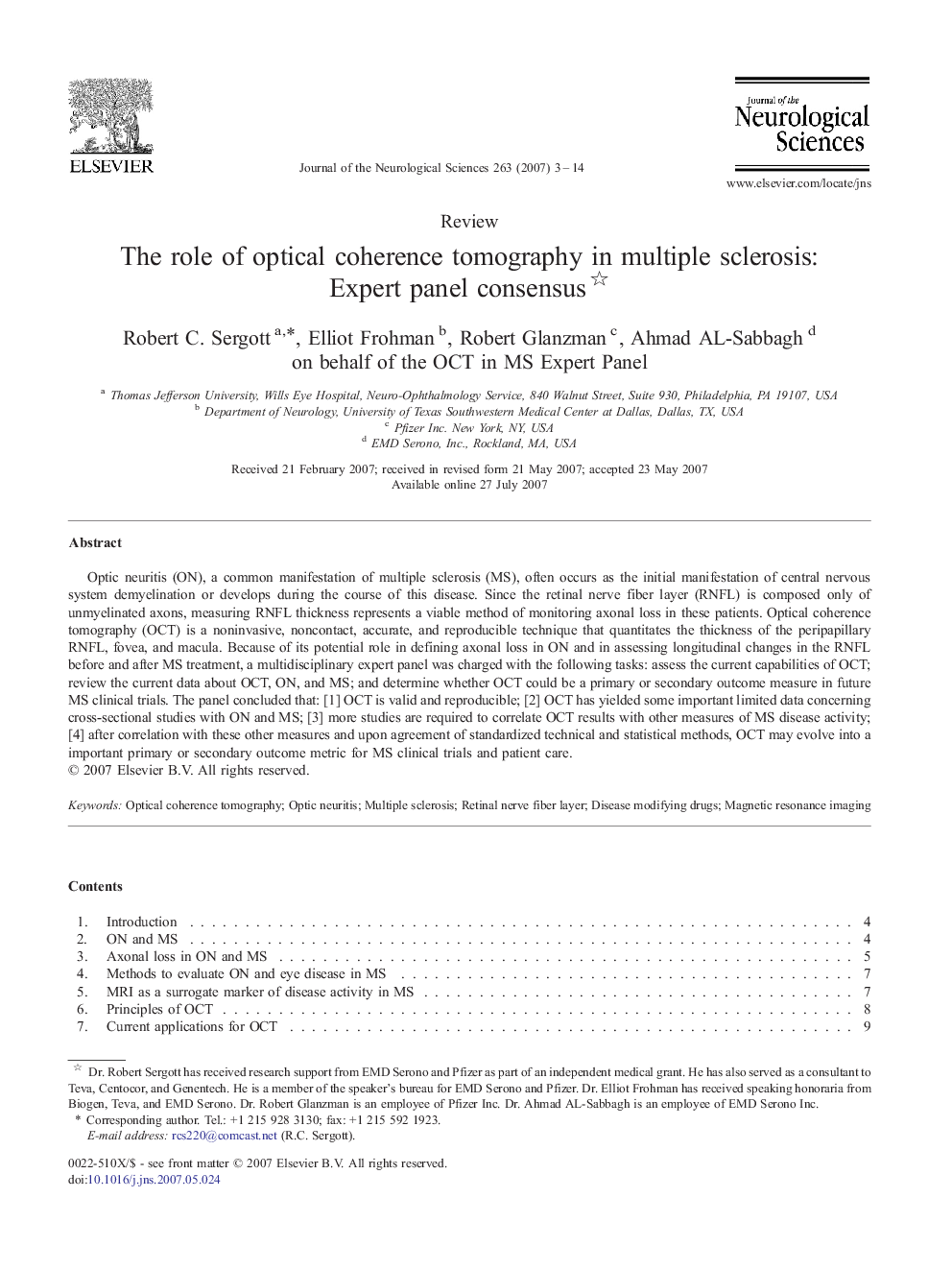| Article ID | Journal | Published Year | Pages | File Type |
|---|---|---|---|---|
| 1915897 | Journal of the Neurological Sciences | 2007 | 12 Pages |
Optic neuritis (ON), a common manifestation of multiple sclerosis (MS), often occurs as the initial manifestation of central nervous system demyelination or develops during the course of this disease. Since the retinal nerve fiber layer (RNFL) is composed only of unmyelinated axons, measuring RNFL thickness represents a viable method of monitoring axonal loss in these patients. Optical coherence tomography (OCT) is a noninvasive, noncontact, accurate, and reproducible technique that quantitates the thickness of the peripapillary RNFL, fovea, and macula. Because of its potential role in defining axonal loss in ON and in assessing longitudinal changes in the RNFL before and after MS treatment, a multidisciplinary expert panel was charged with the following tasks: assess the current capabilities of OCT; review the current data about OCT, ON, and MS; and determine whether OCT could be a primary or secondary outcome measure in future MS clinical trials. The panel concluded that: [1] OCT is valid and reproducible; [2] OCT has yielded some important limited data concerning cross-sectional studies with ON and MS; [3] more studies are required to correlate OCT results with other measures of MS disease activity; [4] after correlation with these other measures and upon agreement of standardized technical and statistical methods, OCT may evolve into a important primary or secondary outcome metric for MS clinical trials and patient care.
